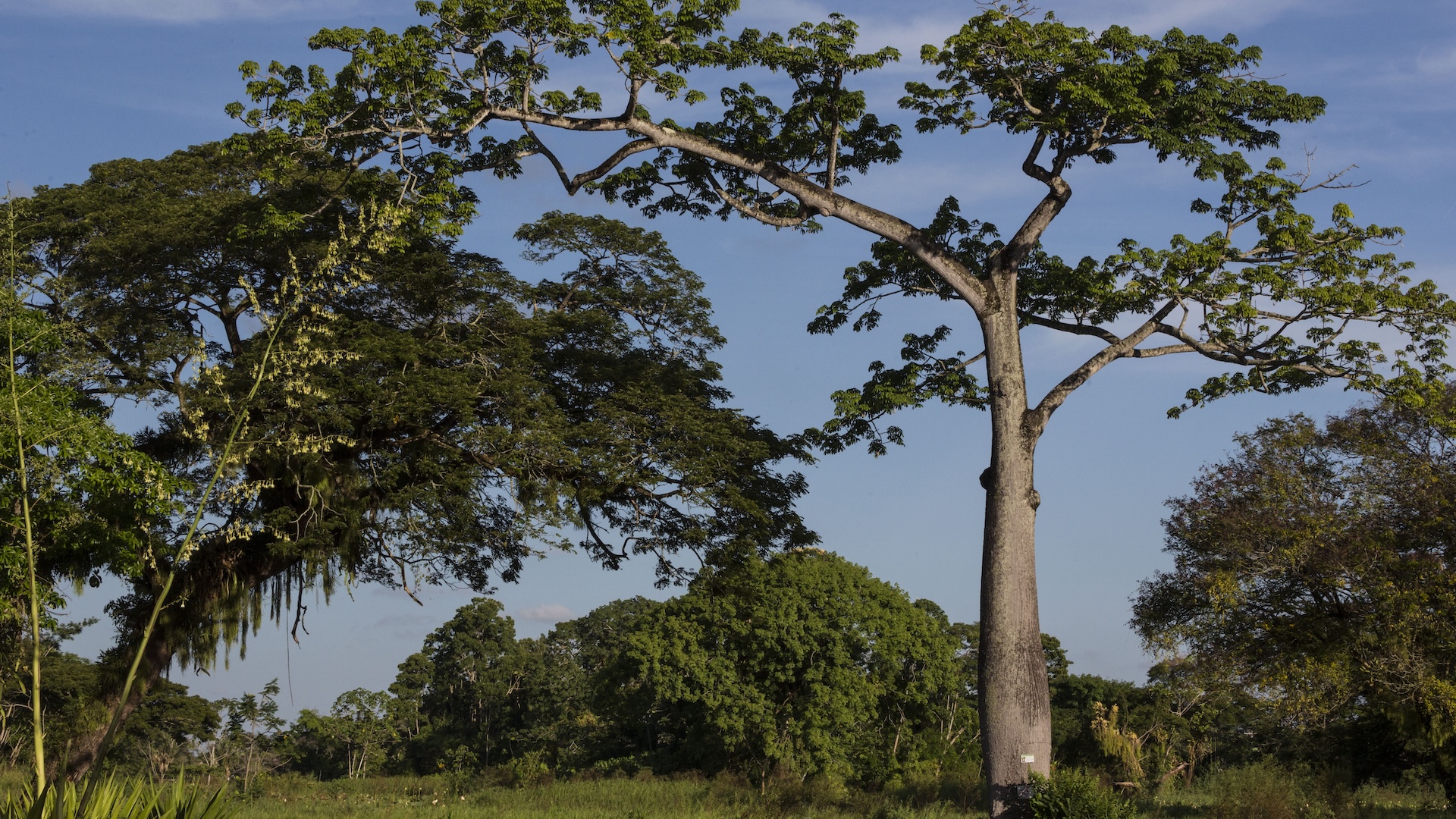
Wild gorillas in Gabon eat several of the same plants traditional healers in the region use, and these plants show antibacterial properties in lab dishes, scientists found.
In a new study, compounds in the bark of different trees showed potency against antibiotic-resistant strains of Escherichia coli, which can cause hard-to-treat infections in humans, including pneumonia and bloodstream infections. The researchers behind the work think these plants from gorillas' diets could lead to promising drugs for people, but much more work is needed to develop such medicines.
In the study, published Wednesday (Sept. 11) in the journal PLOS One, researchers observed western lowland gorillas (Gorilla gorilla gorilla) in Gabon's Moukalaba-Doudou National Park, recording what plants they ate. They also interviewed people in the nearby village of Doussala, including healers and herbalists, about plants used in their traditional medicine.
Past research by the group had revealed drug-resistant E. coli among gorillas in the park; these microbes can potentially cause disease in humans, but apes can often carry the microbes without symptoms. The researchers wanted to understand how the gorillas host pathogenic E. coli without suffering serious disease, and they hypothesized that it might have to do with plants gorillas eat that aren't crucial to their nutrition — such as tree bark.
Related: Dangerous 'superbugs' are a growing threat, and antibiotics can't stop their rise. What can?
The team identified four native plant species were both eaten by gorillas and used in traditional medicine: the fromager tree (Ceiba pentandra), giant yellow mulberry (Myrianthus arboreus), African teak (Milicia excelsa), and fig tree (Ficus).
"One of the inclusion criteria for the various plants studied in our research was the fact that the selected plant consumed by gorillas was also already used in traditional medicine," lead author Leresche Even Doneilly Oyaba Yinda, a bacteriologist at the Interdisciplinary Medical Research Center of Franceville, told Live Science in an email.
The traditional healers use the plants in infusions, extractions and ointments intended to treat a range of conditions, including cough, stomach ulcers, diarrhea and fatigue. For gorillas, tree bark isn't a staple of their diet — they mostly eat fruit — but primatologists consider bark a fallback food for the apes when their preferred foods are less available.
The researchers created bark powder extracts from each tree and then tested the bark extracts' effects on bacteria by placing them in petri dishes with drug-resistant E. coli. These strains had previously been sampled from the gorillas, and the researchers observed whether and how well the extracts inhibited bacterial growth.
The bark of all four trees had antibacterial abilities, with each showing some activity against at least one of the 10 E. coli strains tested. The fromager tree's bark showed the best results at inhibiting E. coli growth and worked against all 10 strains. However, the researchers didn't identify which chemicals within the extract were responsible for the effect.

All of the plants also contained various phenols, alkaloids, flavonoids and proanthocyanidins, which are compounds with anti-inflammatory, anesthetic and antiviral properties.
These four plants could be promising to treat multidrug-resistant bacterial infections in humans, Yinda said. Their antibacterial and antioxidant properties may also explain their use in traditional medicine, he added.
The scientists haven't directly studied how eating these plants might affect gorillas' health, or whether different doses of the plants might have different effects. That said, other great apes have been known to use plants with medicinal properties: chimpanzees periodically eat leaves that can clear parasites from their gut, and orangutans apply leaves to their wounds. Traditional medicine in the regions where these primates live often uses the same plants to treat people with various conditions.
Assuming the tree bark is beneficial to apes, it might be tempting to take cues from the primates — but it's not known how human bodies will respond to the same substances.
"There's a lot of promise there, but there's a lot of pitfalls too," Jessica Lodwick, a primatologist based at Oregon State University who was not involved in the study, told Live Science. Since we're closely related to great apes genetically, it's possible, but not certain, that we'd respond similarly to these plants, Lodwick said. For now, we don't yet know what the plants do inside gorillas' bodies either.
"We have not been able to carry out toxicology and cytotoxicology [toxicity to cells] studies to confirm the absence of side effects," Yinda said. "[But] the fact that these plants have been used since ancient times in traditional medicine, and that gorillas consume them, was one of the factors that led us to consider them relatively safe and effective for humans."
Looking to gorillas to understand plants' medicinal properties could also reveal what plants we need to protect.
"Certain tree species might be taken for logging, and if we don't know which trees provide amazing medicinal applications … then we're just going to destroy our pharmacy — nature's pharmacy," Lodwick said. "It's going to affect us, and it's going to affect the animals that are using it."







